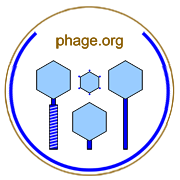

Abstract: Broad-spectrum antibiotics, directed against conserved bacterial targets, are the mainstay of antibacterial therapy. Increasing resistance, however, demands new strategies. Over time a number of therapeutic concepts have evolved, starting out with the use of polyclonal antisera, which were rapidly replaced by the easier to use antibiotics. Other concepts, such as immunotherapy, radioimmunotherapy, anti-virulence agents, phage therapy and others are under evaluation and often limited in application. In the discovery process of new antibiotics in the pharmaceutical industry quite a number of new agents have emerged, which exhibit a surprisingly high degree of species-specificity. None of them has been considered for development so far. Some examples from the literature which show selectivity for Helicobacter pylori, Pseudomonas aeruginosa, Haemophilus influenzae, Staphylococcus aureus, anaerobes, and others, will be discussed here. It is postulated that there is a room for such agents in future antibacterial therapy, e.g. in difficult to treat infections caused by nonfermenters such as multiresistant P. aerugoinosa, Acinetobacter, Enterobacteriaceae, and S.aureus, including MRSA. Their application would include monotherapy as well as combination therapy with other antibiotics, antivirulence agents or immunotherapy and these possibilities would greatly expand the current anti-infective armamentarium.
From pp. 556-557: "10). Phages ¶ Bacterial viruses are very specific for certain species, subspecies or even bacterial subtypes. Although the principal idea of using bacteriophages for therapy of bacterial infections is quite old [15-18], it has so far not been established as a safe and effective procedure and larger randomized clinical studies are missing [17]. Impressive clinical results, on average around 85% cures, have, however, been reported from small studies in the former Soviet Union and Poland [17,18]. Various patient groups (children, adults, cancer patients) and infections (septicemias, eye- and wound infections) have been treated, mostly after classical antibiotic therapy had failed. Phage therapy is currently considered an experimental treatment and considerable obstacles have to be overcome before this principle can be broadly applied, e.g. the quality of the phage preparation, maintenance of viability, the mode of application, the fast appearance of resistant strains [19] and the very narrow spectrum, either requiring specific diagnostics of subtypes or application of phage mixtures. In face of diminishing options with antibiotic therapy or antibiotic failure, there is, however, renewed interest in this approach, both in animals and in man [17,18]. ¶ An alternative approach would be the use of isolated phage lysins [17,20]. These are very effective pepdido-glycan-degrading enzymes, killing Gram-positive bacteria within seconds."
Return to Home or see Phage Terms/Glossary. Contact web master.












[full text not included]